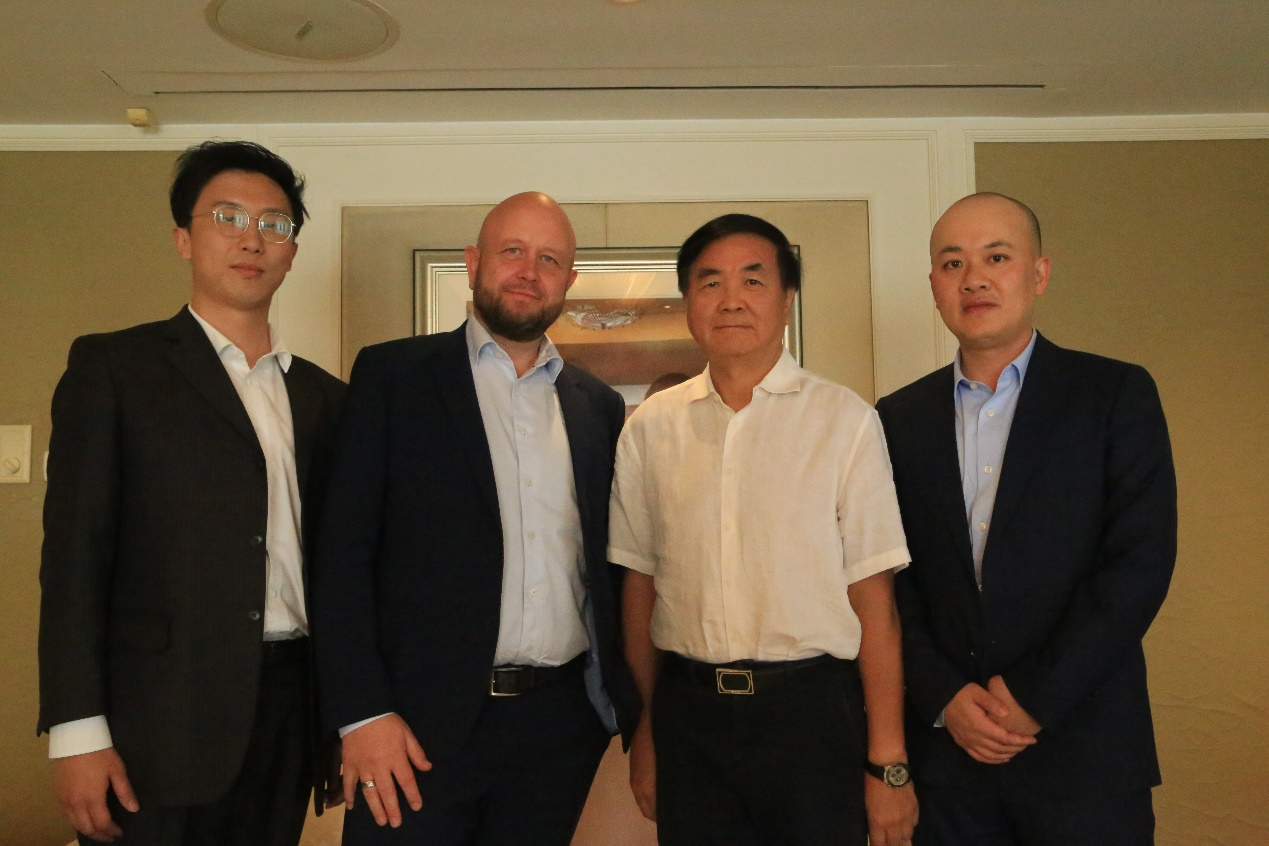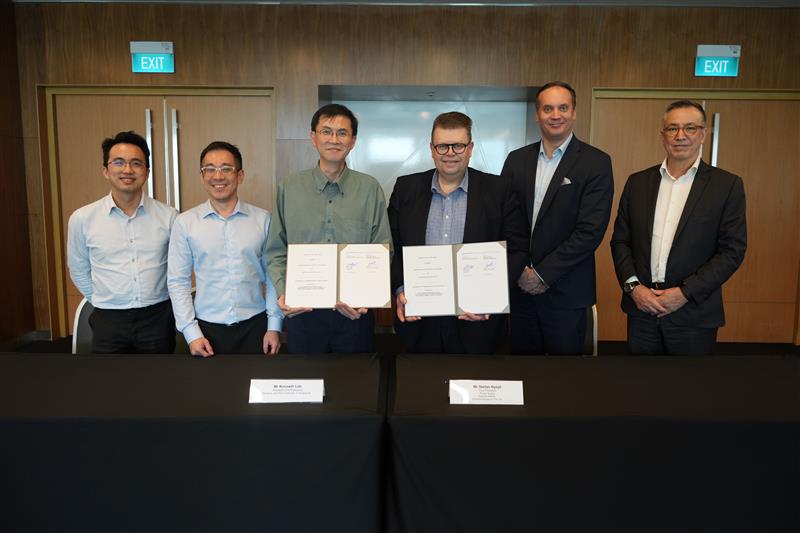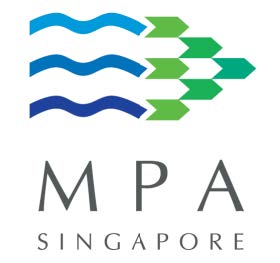3.
Xinde Marine: As the CCO of OSM, you came to Shanghai at once after the pandemic, does this mean that OSM will do more in China?
Tommy: We have an office in Shanghai and Mr. Zhoubin is the General Manager Mr. Zhou Bin is our head of Greater China in charge of our China affairs in Shanghai. In addition, we have a great amount of new-building supervision business in the Chinese market. During the pandemic, we supervised the building of 12 car carriers in Chinese shipyards.
It is worth mentioning that the world's largest DP shuttle tanker "North the Pioneer", which was delivered in China's Dalian Shipbuilding Group not long ago, was built under the supervision of OSM, as reported in a previous article
"The Official delivery of The World's Largest New DP Tanker ‘North the Pioneer’" by Xinde Marine News.
Tommy continued: We have a strong global network to serve our Chinese clients, but we have no plans to set more offices in China now. Also, as we will soon merge with Thome, which also has its own office in Shanghai, our market share in China will become even larger.
As for the business, we certainly hope to further expand our market share in the China. We want to use our expertise, for example in the supervision and management of shuttle tankers, to provide more services to the Chinese shipping industry.
The future development of OSM
4.
Xinde Marine: Since you mentioned Thome, can you give an update of the merger of OSM and Thome? About when will it be approved?
Tommy:Yes, we will probably change our name to OSM Thome soon, as it was announced earlier this year that OSM and Thome will be merged into one ship management company. We are waiting for regulatory approval, which we need from four countries, including Norway, Finland, Cyprus and Nigeria. It is expected to have all approvals by May.
Once we get all of them, we will double our size when the two companies are merged. The number of vessels managed under OSM Thome will then be 1,000, with technical management for 450 vessels (ranked fourth or fifth in the world) and crew management for another 550 (which will be ranked first in the world).
5.
Xinde Marine: How OSM views growth? Big is beautiful?
Tommy: In the last three years, we have acquired several companies including Kristian Gerhard Jebsen Skipsrederi (KGJS)、GC Rieber Shipping、 SeaTeam Management Pte. Ltd. Our merger with Thome is about to bear fruit. We would also be very interested in any ship management companies from China that would like to join us.
The future of ship management business will be challenging. But with larger scale and wider network coverage, we will certainly have higher efficiency and better able to face the challenges.
Lam agreed with him, adding: Yes. With the green transformation of the shipping industry and the release of more regulations like CII, EU ETS and carbon trading,etc., the resources consumed in ship management increases, which needs larger scale to better improve efficiency. In addition, for small and medium-sized ship owners, with the change in crew number, the deployment of employees in offices can also be a problem. But if a third-party ship management is adopted, such problem will not exist while the efficiency can be improved.
How OSM views seafarers from China?
6.
Xinde Marine: China also has a great number of seafarers. How many Chinese seafarers are there in OSM?
Tommy: Not much, indeed. Taking those working for Thome into account, the number is about 500-600. There were more Chinese crews working in our company in 2018 and 2019.
Lam: The pandemic is the main reason for the decline, which made it difficult for seafarers to change shifts and the wages of Chinese seafarers increased more than those from the Philippines and other countries during the pandemic have also made ship owners employ more crews with other nationalities instead.
Zhou: Following the relief of China’s pandemic policy, we have noticed a change in the wage structure of Chinese crews. We believe that the market will return to a more rational and transparent level, and OSM will also pay close attention to and explore win-win opportunities with Chinese crews on various vessel platforms.
7.
Xinde Marine: Then how OSM view Chinese seafarers market? Have any suggestions?
Lam: I have been doing jobs relating to the seafarers since 1974. Back then, the number of seafarers in Japan, Korea and Taiwan province, China was already on the decline. It’s trend that with the development of a nation or a region, there will be less people be seafarers. The trend also emerges in China now.
Tommy: Yes, and I think there will be less Chinese crews working on the traditional vessels like dry bulk vessels and tankers in the future. But when it comes to those new-type and high-tech vessels, Chinese crews will be more competitive. Just as Norwegian seafarers market, those seafarers are seldom found working on dry bulk vessels and tankers, instead, many of they work on offshore vessels like wind power vessels.
Lam: Yes, Chinese seafarers need to move to a higher-end direction. Compared with the seafarers from the Philippines, those from China have a better fundamental education with higher education level and personal quality. After proper training and gaining some experiences, Chinese crews will better able to adapt to “high-end” vessels.
Tommy: With the application of various new technologies, it’s also very significant to consider how to provide a higher level training to Chinese seafarers, which is a vital advantage to win the market.
Lam: The suggestion from OSM will be given to the decision-makers. They need to adopt a high-end development method. OSM is also willing to give support.
8.
Xinde Marine: As for new technologies, would you give some comments on autonomous ships?
Tommy: Actually, we have managed autonomous ships for a company named Ocean Infinity. Since the regulations in the area still need some improvements, we appoint some seafarers to operate it. I don’t think fully automation is possible, but it will be more and more automated, requiring less human intervention. The future of ship management will witness more remote strict operation and more drone will also be included.
Based on the discussions above, the development of intelligent ships is a bless to Chinese seafarers. Because more automated and intelligent vessels require more intellectual work, which means Chinese crews with better education backgrounds and higher comprehensive qualities can better operate those high-end vessels.






 Baltic Exchange launches new Fuel Equivalence Conve
Baltic Exchange launches new Fuel Equivalence Conve  21 Consecutive Years of QUALSHIP 21 Recognition for
21 Consecutive Years of QUALSHIP 21 Recognition for  MPA and Wärtsilä Renew Partnership to Drive Marit
MPA and Wärtsilä Renew Partnership to Drive Marit  MPA and Dalian Maritime University Renew Partnershi
MPA and Dalian Maritime University Renew Partnershi  PSA INTERNATIONAL, DNV AND PACIFIC INTERNATIONAL LI
PSA INTERNATIONAL, DNV AND PACIFIC INTERNATIONAL LI  INTERCARGO Reaffirms Call for Simplicity as IMO Cli
INTERCARGO Reaffirms Call for Simplicity as IMO Cli